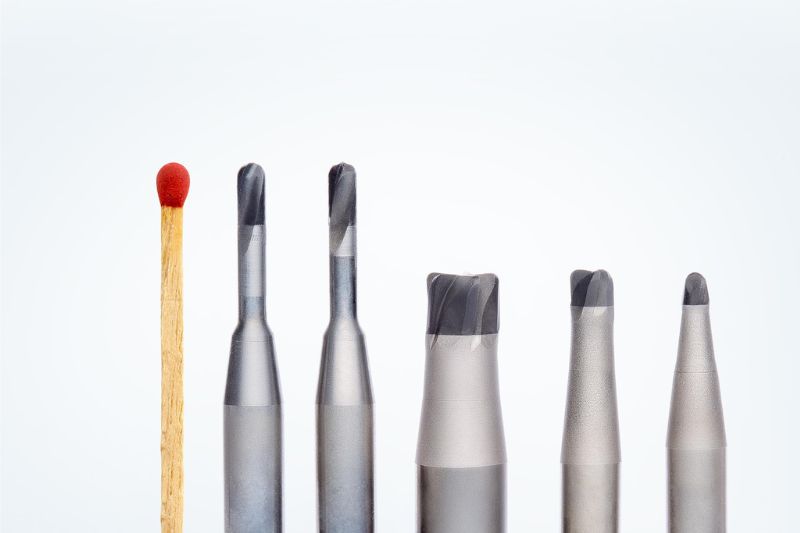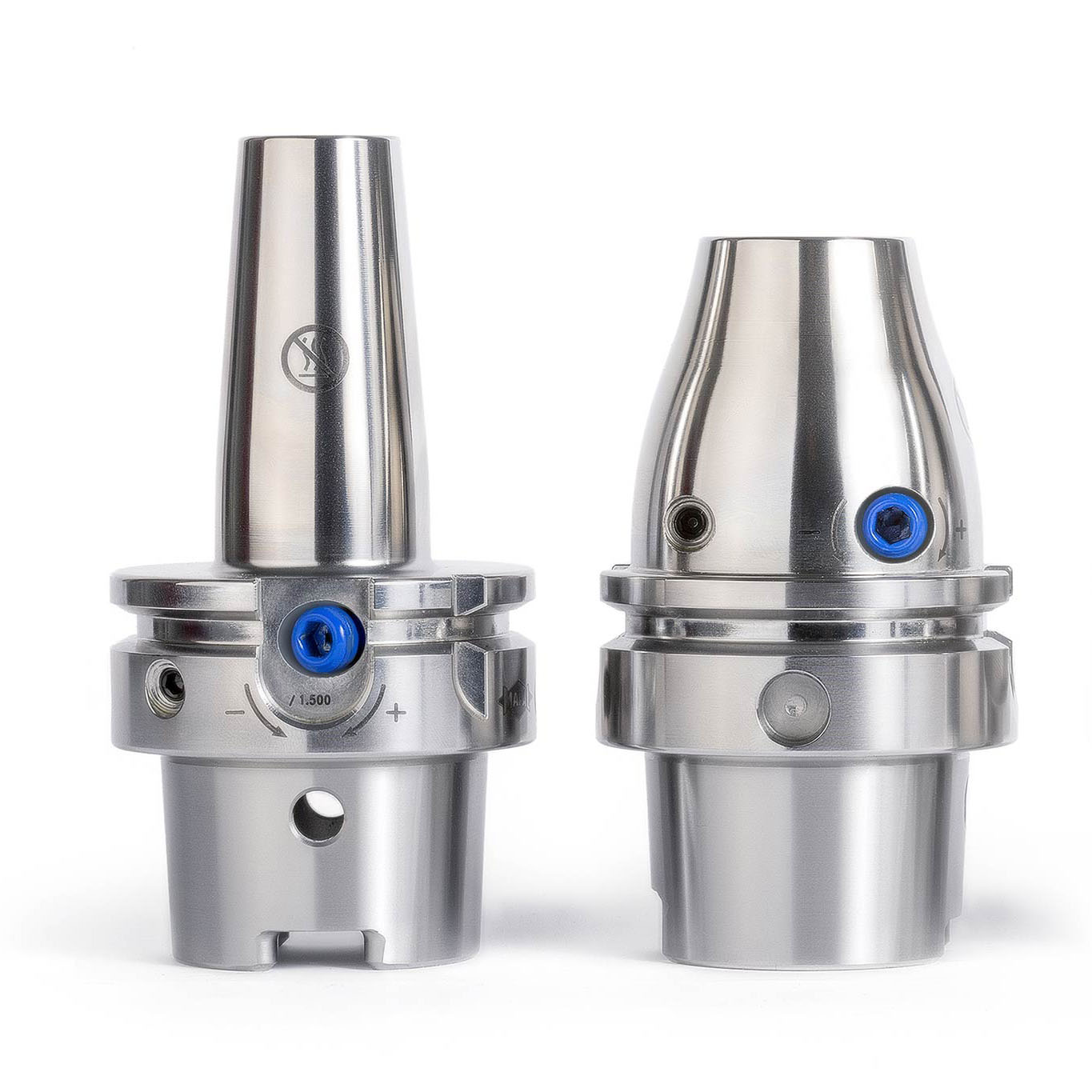Machining carbide with PCD solid head milling cutters

With new PCD solid head milling cutters, MAPAL is extending the possibility of machining carbide and other hard-brittle materials to smaller diameters.
Deep-drawing dies in the die & mould sector are often made of durable carbide. Machining them by die-sinking or grinding is tedious. Machining with coated solid carbide tools often suffers from high wear and low tool life. PCD tools are a cost-efficient alternative here.
The punches and die moulds usually require tools with diameters less than 6 mm. To execute these tool dimensions in PCD, full-head PCD must be used, since smaller milling cutters have no room for brazed-on cutting edges and their substructure. With new geometry, number of cutting edges and arrangement, MAPAL now makes it possible to machine hard-brittle workpiece materials with diameters from 2 to 6 mm.
To produce the perfect PCD tool according to customer requirements, blanks are kept in stock in the appropriate sizes. PCD is more expensive than solid carbide, but thanks to the longer tool life and shorter process times, break-even is quickly reached. In tests, the new milling cutters managed significantly higher feeds per tooth compared to solid carbide and therefore a much higher machining volume.
In addition to carbide, hard-brittle materials also include zirconia, a ceramic material used in dental technology. The new PCD solid head milling cutters from MAPAL are also an alternative to solid carbide in this area.
